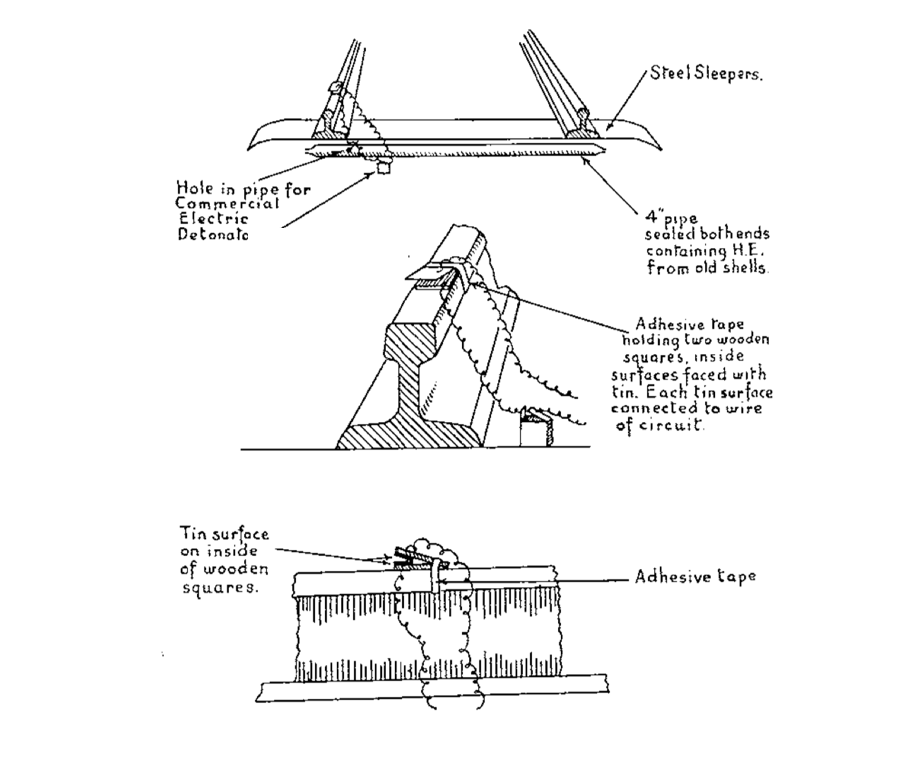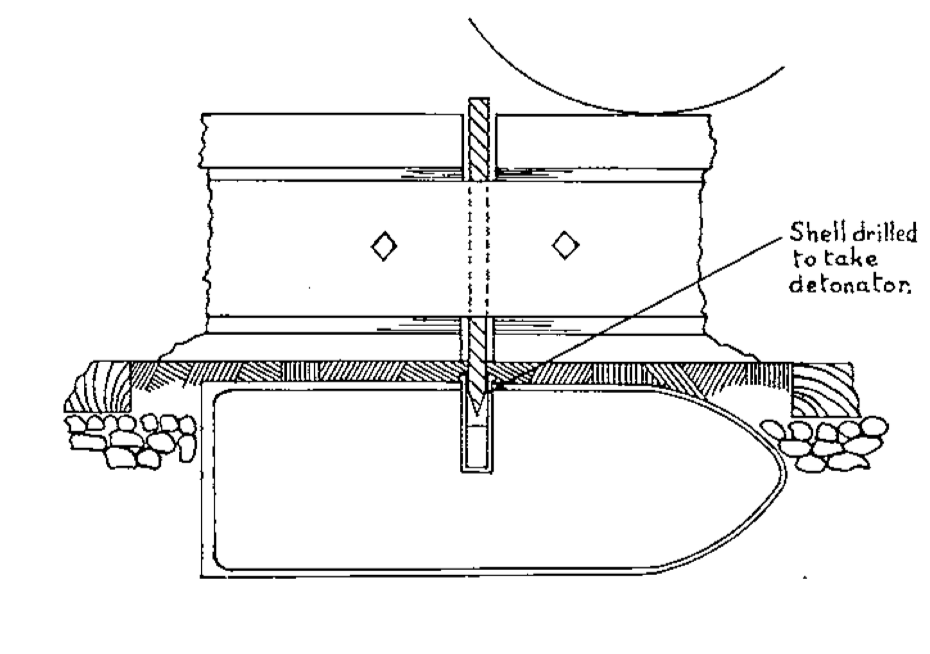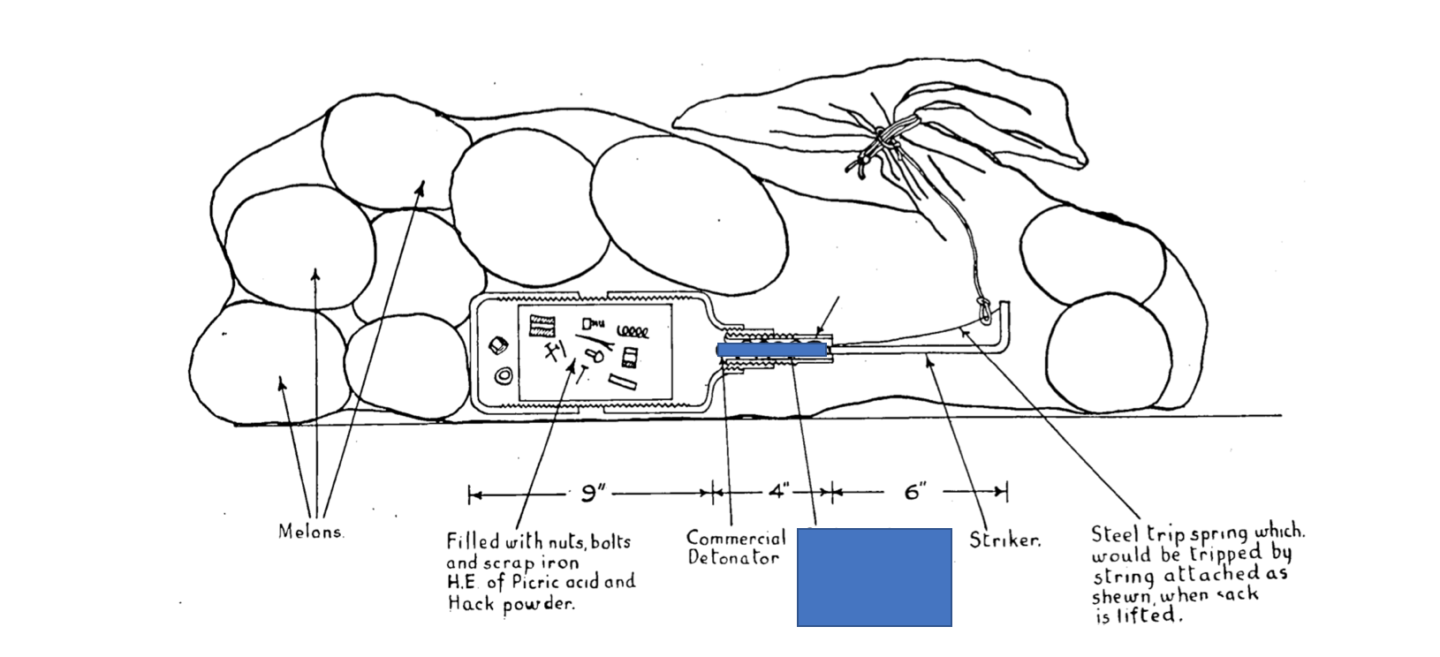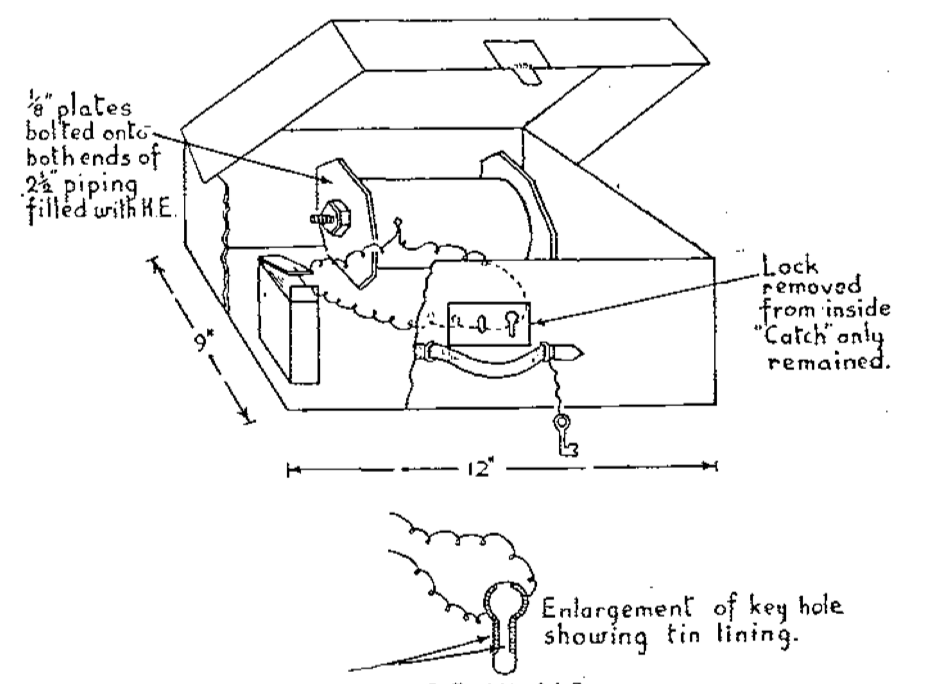I’ve been digging away at a few historical instances of IEDs using artillery shells or other ordnance, either recovered from battlefields or from storage depots. – These were seen very frequently, of course, in the Iraq conflict of the previous decade and still occur today – but I’ve been looking back for earlier instances.
I have lost a reference that I’m sure I had found discussing Belgian resistance groups in WW2 “steaming out” explosive from munitions recovered from WW1 battlefields so I have no detail on that. But I do have some reports from IRA devices in the 1920’s that used stolen artillery shells. Recently I have picked up threads of some interesting history from Waziristan (now NW Pakistan) in 1937 where the British were involved in a nasty little campaign against the Pashtun in the area (on and off over a few decades actually) – but there are reports of both locals AND the British military using discarded or recovered munitions in “booby traps”. The British Army were no angels when it came to what we today call IEDs. I have yet to uncover more details but I then stumbled across a great report from 1935-1936, but from “Palestine”: where British forces were dealing with an IED campaign from the Arabs at the time.
The report I have has some terrific diagrams – in the interests of not teaching the wrong people, I’m not going to say where I found this report and I’m going to blur a bit some of the diagrams and be a little vague about some technicalities. so if the diagrams or explanations don’t quite make full sense, that’s the reason. The devices are largely what we would today call “victim operated” – i.e. with some sort of switch that an unsuspecting victim would trigger. If I’m honest I think the author is describing the devices “second hand” – some aspects of his report are doubtful, but interesting nonetheless.
The first device was found and defused by an infantry patrol of the South Wales Borderers on a railway line between Jerusalem and Artuf. They noticed the switch laid on the rail, dealt with the device themselves, threw the components in a wheelbarrow and delivered the device to a Royal Engineer in Lydda station.

Although this device above used HE extracted from “old shells”, a number of other devices used the shells themselves, with a very idiosyncratic methodology of drilling a hole in the side of the shell, and then inserting a plain detonator into it. The shell was then buried under a rail and a striker pin attached to the rail such that the defection of the rail when a train passes pushed the pin into the detonator. If I’m frank, I find the author’s report here a little unconvincing, as I cant see a safe way of setting the device below. Elsewhere the author of the report, an Engineer officer, doesn’t appear to be aware of the existence of delay detonators – but I may be doing him a disservice – did delay detonators exist in the 1930s?

The report mentions an interesting device rendered safe – a “daisy chain of artillery shells” along the Nablus-Tulkarm Road, with shells spaced out every few feet, a total of ten 6″ shells buried a foot deep alongside the road – something that EOD operators in Iraq in say 2004/5 would have found very familiar. However the device had been placed by an amateur and did not have a viable initiation system.
Here’s an interesting victim operated device that was successfully made safe. I’ve hidden the key part of the mechanism but those that need to know can work it out, I’m sure. The device was placed on a track used by Jewish settlers. The device was dealt with by pulling the string causing it to initiate.

I confess this next device described in the report I find a little unconvincing – while it might theoretically work its seems too tricky to manufacture with any ease. The idea of making a circuit with a key in the lock would be difficult to do reliably. Tell me if you disagree

The final device, which I won’t show because I suspect it’s a very effective device used a mousetrap and string to trigger an IED protecting a stone “sangar” sniper position near Nur-esh Shems. Interestingly the device was allegedly laid by an Arab revolutionary called “Fauzi Khawaji” from Iraq, who had been formally trained as an officer at the French St Cyr academy.
The report also mentions that the British Royal Engineers, (specifically 2nd Field Coy RE and 12 Field Coy RE) used IEDs themselves to protect the Jerusalem water supply – they booby trapped a number of manhole covers and other British used sanagars. The first victim was a water company official who hadn’t been told…. the official wasn’t seriously injured… but as a result the RE increased the size of the explosive charges from 2lb to 5 lb! the initiation system for these Royal Engineer IEDs was a “bare wire loop switch”….which I won’t explain further here. I find this very strange given the theoretical availability of “proper” switches in the RE inventory. These “British” devices were used elsewhere too and when they caused casualties the British blamed the victims for having a device that exploded prematurely.
Given the reports I am piecing together about British use of IEDs in Waziristan, also in 1937, it seems that this tactic was not a one off. Make of that what you will.
The Arabs supply of munitions to use in IEDs were thought to have come from WW1 ammunition Depots in Gaza or Rafah (either Turkish or British) that were mismanaged after WW1. The task of dealing with these munitions supply dumps after WW1 was given to a contractor (!) who allegedly cut corners, leaving a significant quantity “under sand” which could be easily recovered.

I agree from my rudimentary knowledge of those kind of lock the entire key way is metal. So I find it difficult that they would use this as switch. Seems like a self correcting problem. Keep up the awesome work I enjoy reading your posts.
I think using a mouse trap or clothes pin could work perfectly for this device. I still find it problematic by removing the lock and insulating the key way. But if it worked I can’t argue with success.
Cheers!
Duke